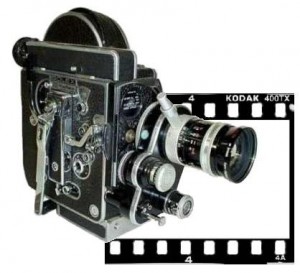 Journalists are busy people; they receive numerous pitches a day, all vying for their immediate attention. The one-size-fits-all approach won’t cut through the clutter to reach the journalist; no, sloppy and lazy pitches only end up in the trash where they belong. To grab the attention of the media member, you must know what they want and need.
Journalists are busy people; they receive numerous pitches a day, all vying for their immediate attention. The one-size-fits-all approach won’t cut through the clutter to reach the journalist; no, sloppy and lazy pitches only end up in the trash where they belong. To grab the attention of the media member, you must know what they want and need.
Think like a reporter
Unfortunately, there is a love-hate relationship between media members and Public Relations professionals. We depend on each other to accomplish our jobs, but we walk a fine line between partnership and opposition. With more journalists “crossing over to the dark side” to work in PR, practitioners and media members are working to better understand the needs of one another.
When it comes to pitching, PR professionals need to put themselves in the shoes of the media member they are reaching out to. What needs do they have that we can meet? How can we meet those needs?
How do you cut through the clutter?
1) Know your (reporter’s) audience
One of the best pieces of advice I’ve ever received from a reporter is to pitch to the reporter’s audience. If you want to pitch a reporter, find out how you’re story idea is going to interest the reporter’s readers, viewers or listeners. What’s the hook? Also, the days of sending out pitches to every reporter in town are long gone. You need to know what beat the reporter you’re pitching covers. You would look foolish to pitch a sports reporter about an upcoming fashion release.
2) Get to the point
As journalists are wading through hundreds of emails a day, they don’t have time to read multiple paragraphs before getting to the point of what the pitch is about. In the first line of your email, the journalist should be able to grasp what it is you want from them and how it will entice their audience.
If you’re pitching by phone, always ask first if the reporter has the time to speak with you. It they do, get to the point quickly. If they don’t, ask when you could call back to discuss the pitch.
3) Give plenty of notice
The more notice you can give a reporter, the better your chances they can schedule it. However, don’t think sending just one pitch and getting on a reporter’s schedule guarantees coverage. You need to follow up (tactfully) before the event, especially the day before, to be sure the reporter remembers.
Breaking news can always pull a reporter away at the last moment, so be prepared to follow up after the event with product the reporter can easily use, which leads us to …
4) Do the leg work
Make it as easy as possible on the reporter. Be sure to have plenty of media products on hand that the reporter can use, such as bios, backgrounders, facts and figures, and features. Online newsrooms make great one-stop shopping outlets for this information. Also have photo and video footage available for use. Though must news outlets will want to garner their own creative material, it always helps to have this product available.
5) Shape the story, but be flexible
When pitching story ideas, you always want to shape the story in the best possible light. Give the reporter an idea about how his audience would be interested in what you’ve got to say, but be willing to hear the reporter’s angle on the story. Work together and find the middle ground.
6) Be available and follow up
After you’ve made your pitch, after the interview, after the event, make yourself available to the media member for any follow-up questions. It’s always a polite gesture to send an email or make a phone call (usually however you first pitched) to thank the reporter for coming out. This is also a great opportunity to add or clarify any information that you or your spokesperson forgot during the interview.
How do you pitch the media? Share your best pitches in the comments below, and let me know how they were received. If you’re not already, incorporate these tips for your next pitch and see if you receive better results. Let me know how it goes.
photo credit: Poetprince via photo pin cc



